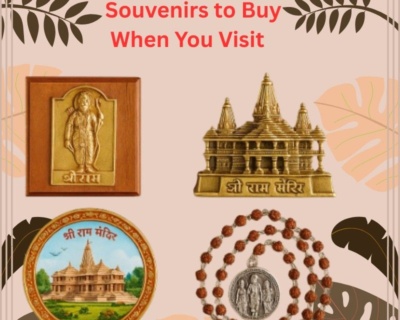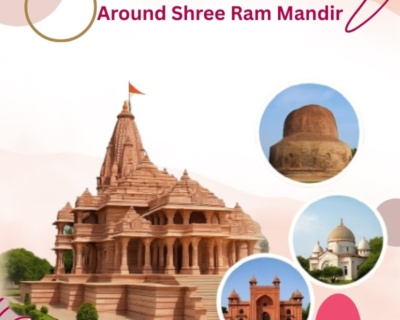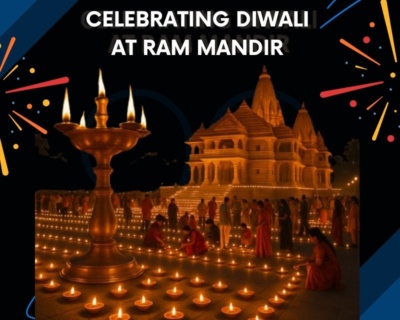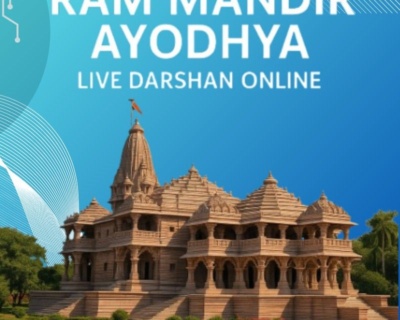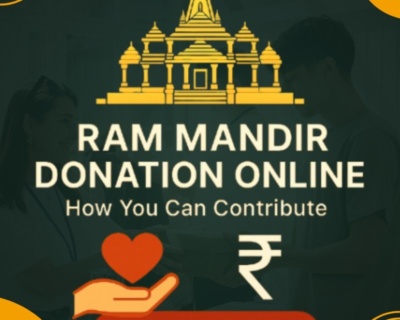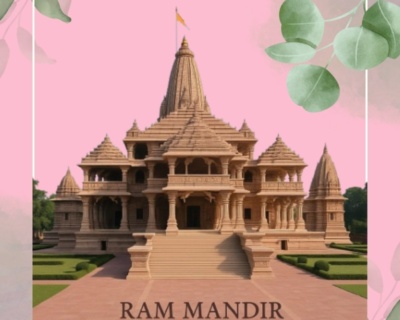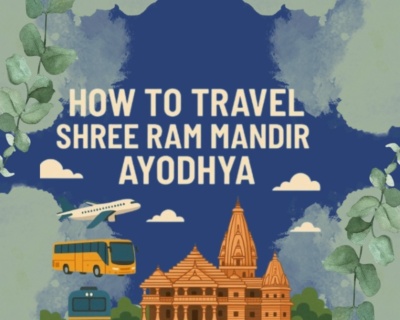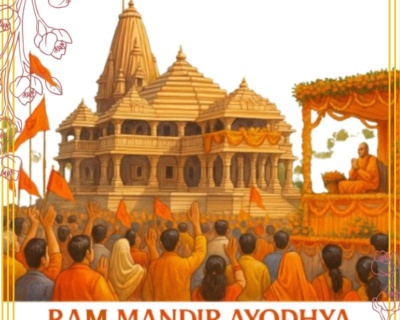How Ram Mandir Inspired Devotional Art, Music
- May 25, 2025
- Uncategorized
The inauguration of the Ram Mandir in Ayodhya in 2024 was a deeply spiritual moment for millions of Hindus around the world. Yet, its significance stretches far beyond religion alone. The temple has emerged as a profound cultural catalyst, inspiring a new wave of devotional art and music that blends faith, tradition, and creative expression. From ancient chants given new life to vibrant visual interpretations of Lord Ram and his epic tale, the Ram Mandir has reignited devotional fervor across India’s artistic and musical landscapes.
A Sacred Symbol Fuels Creative Fire
Ram Mandir, with its monumental architecture and spiritual symbolism, has become more than just a temple it is a source of inspiration. Artists, musicians, and creators across the country are drawing from its spiritual energy to craft works that celebrate devotion, history, and divinity.
The return of Lord Ram to Ayodhya and the construction of his temple symbolize righteousness, dharma, and cultural pride. These themes resonate deeply with artists seeking to connect with Indian heritage. As a result, creative expressions are emerging in a variety of forms from murals and sculptures to devotional songs and digital art.
The Rise of Devotional Visual Art
Visual art has always played an essential role in Indian spirituality. Temples, manuscripts, and cave paintings have long depicted episodes from the Ramayana. With the revival of the Ram Mandir, artists are once again turning to these timeless stories, but with contemporary styles and tools.
Across India, large-scale murals featuring Lord Ram, Sita, Hanuman, and scenes from the Ramayana are appearing in public spaces, community halls, and even metro stations. These artworks not only beautify the surroundings but also evoke devotion in everyday life.
Additionally, professional and amateur painters have created thousands of Ram Mandir-inspired canvases. Many artists use traditional mediums like watercolors and oil paints, while others have embraced digital platforms, producing stylized illustrations, animations, and mandala patterns centered around the temple and Lord Ram.
Digital Devotion: Art in the Internet Age
The digital age has transformed how art is created and consumed. With social media platforms like Instagram, YouTube, and Pinterest, devotional art has become more accessible and shareable than ever. Hashtags like RamMandirArt and LordRam draw thousands of entries from artists around the world, each offering a unique visual interpretation of divinity.
In the realm of digital illustration, young creators are blending mythological themes with modern aesthetics minimalist Ram silhouettes, vector-style temples, or surreal landscapes inspired by Ayodhya’s spiritual aura. Some are even selling Ram Mandir-themed prints, merchandise, and NFTs (Non-Fungible Tokens), giving rise to a new devotional art economy.
Sculpture and Traditional Craft Revival
The spiritual magnetism of the Ram Mandir has also led to a resurgence in traditional sculpture and crafts. Artisans from regions like Rajasthan, Tamil Nadu, and Odisha have begun crafting intricate wooden and stone idols of Lord Ram, Lakshman, Sita, and Hanuman, modeled on the temple’s sanctified images.
These sculptures are being used in home shrines, spiritual centers, and even public displays, spreading devotion in a tactile, tangible way. Workshops and exhibitions celebrating traditional temple craftsmanship have become more popular, helping preserve endangered techniques and passing them on to newer generations.
The Sound of Devotion: A Musical Awakening
Alongside visual art, music has experienced a profound transformation under the influence of the Ram Mandir. From classical bhajans to modern fusion, devotional music centered on Lord Ram is undergoing a revival that transcends boundaries.
Classical Roots Revisited
The rich tradition of Ram bhakti music especially compositions from Tulsidas’s Ramcharitmanas and Valmiki’s Ramayana has found new expression through classical singers, temple musicians, and folk artists. Many are performing renditions of age old bhajans with fresh arrangements, attracting both older devotees and younger audiences.
Notably, during the temple’s inauguration, live performances of “Shri Ram Jai Ram Jai Jai Ram” and other hymns echoed across Ayodhya, sparking a renewed interest in classical devotional music. These chants are now frequently streamed online and played during household prayers.
Fusion and Contemporary Bhakti
A new genre of devotional fusion music has emerged in recent years. Artists are blending traditional lyrics with modern instruments and production styles acoustic guitars, electronic beats, lo-fi rhythms, and even hip-hop influences. Tracks like “Ram Siya Ram” and “Jai Shree Ram” have become viral hits on Spotify, YouTube, and Instagram reels, introducing devotion to a wider, younger audience.
Music labels and independent musicians have produced cinematic music videos showcasing Lord Ram’s story, often using animation, dance, and visual storytelling that appeal to modern sensibilities.
Temple Inspired Festivals and Performances
The spiritual momentum surrounding the Ram Mandir has also brought a resurgence of cultural festivals, stage performances, and spiritual concerts. Events like Ram Leela the traditional dramatization of the Ramayana are now being reimagined with high production values, sound design, and lighting that rival theatrical productions.
Bhakti sangeet (devotional music concerts) have been organized in major cities to celebrate the temple’s influence. These events feature classical, folk, and fusion artists coming together in celebration of Lord Ram, often performing in front of digital backdrops inspired by the Mandir’s architecture and history.
Influence on Indian Film and Media
The Ram Mandir has had a noticeable impact on Indian popular media as well. Recent films and documentaries have explored the legacy of Lord Ram, the spiritual importance of Ayodhya, and the journey of the temple’s construction. These productions are often accompanied by devotional soundtracks that blend spiritual lyrics with cinematic scoring.
Moreover, devotional content on streaming platforms whether in the form of guided meditations, mantras, or Ramayan storytelling has seen a rise in demand, reflecting a broader shift toward spiritual media consumption.
A Global Cultural Phenomenon
The influence of Ram Mandir-inspired art and music isn’t limited to India. Devotees and creators in countries like the United States, Canada, the UK, and Australia have embraced this cultural revival. Diaspora communities are organizing art exhibitions, devotional concerts, and digital collaborations to honor the temple and their spiritual heritage.
Indian artists abroad are contributing through YouTube channels, devotional podcasts, and online galleries, creating a global wave of creative bhakti that transcends borders and languages.
Conclusion: Where Devotion Meets Creation
The Ram Mandir stands as a testament to India’s spiritual resilience, but it also represents a creative reawakening. Through art and music, devotion to Lord Ram is taking on new forms dynamic, expressive, and deeply personal. This resurgence of devotional creativity is helping people rediscover their roots, express their spirituality, and connect with faith in a modern world.
In many ways, the Ram Mandir has not only restored a sacred site but also revived the soul of India’s artistic and musical traditions. As more creators draw inspiration from its sacred energy, the temple continues to be a divine muse inviting the world to witness how faith, when expressed through art and song, becomes eternal.


